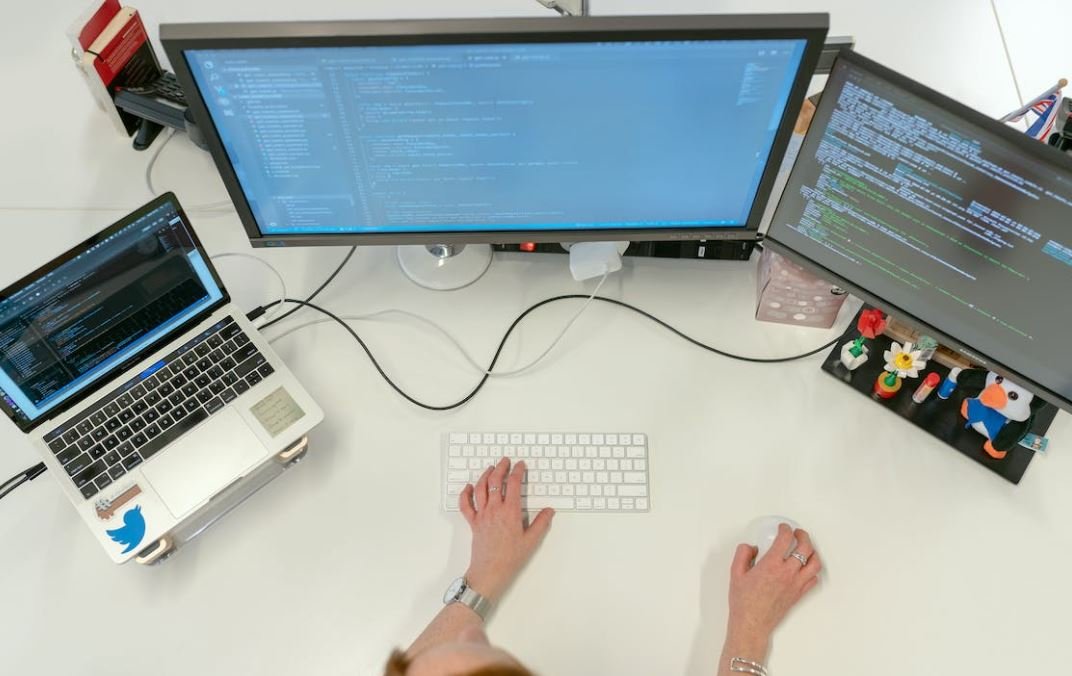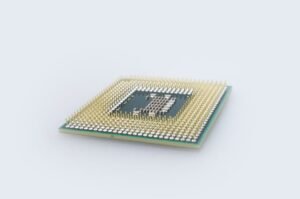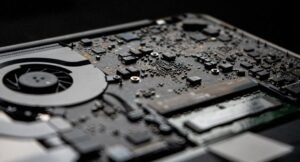Deep Learning YOLO
Deep Learning YOLO (You Only Look Once) is an object detection model that has gained significant popularity in recent years due to its relatively fast and accurate performance. It is commonly used in various applications such as autonomous vehicles, surveillance systems, and image recognition.
Key Takeaways
- YOLO is an object detection model used in computer vision applications.
- It has gained popularity due to its fast and accurate performance.
- YOLO can detect multiple objects in an image simultaneously.
- It utilizes deep learning techniques, specifically convolutional neural networks (CNNs).
YOLO-Algorithm operates by dividing the input image into a grid and predicting bounding boxes and class probabilities for each grid cell, resulting in multiple predictions across the entire image. It starts with a convolutional neural network pre-trained on a large dataset and then fine-tuned for object detection.
Implementing You Only Look Once allows for faster inference times compared to other object detection approaches.
Applications of YOLO
YOLO can be applied to a variety of tasks, including:
- Object detection in real-time video streams.
- Surveillance systems for identifying potential threats.
- Autonomous vehicles for understanding the surrounding environment.
- Criminal identification through facial recognition.
Advantages and Limitations
YOLO offers several advantages compared to traditional object detection models:
- Fast inference time due to its one-step detection process.
- Simultaneous detection of multiple objects in an image.
- Excellent performance on detecting large objects.
However, YOLO does have limitations:
- Difficulty in detecting small objects due to the coarse grid.
- Challenges with precise localization of objects.
YOLO Performance Comparison
| Model | Mean Average Precision (mAP) | Inference Time (ms) |
|---|---|---|
| YOLOv3 | 57.9% | 33 |
| Faster R-CNN | 59.1% | 198 |
| SSD | 47.7% | 41 |
Table 1: Performance comparison of popular object detection models.
YOLO Architecture
The YOLO architecture consists of the following key components:
- Input Image
- Feature Extractor (CNN)
- Grid
- Bounding Box Predictions
- Object Class Predictions
- Non-Maximum Suppression
YOLOv4: The Latest Version
YOLOv4 is the latest iteration of the YOLO model and offers significant performance improvements over its predecessors. It introduces various advancements, including:
- Improved network architecture for better accuracy.
- Integration of cutting-edge techniques like Mish activation and SAM (Spatially Adaptive Denormalization).
- Increased model size for enhanced detection capabilities.
YOLO Limitations and Future Developments
The YOLO model, despite its successes, still faces some limitations. Current research aims to address these limitations by:
- Improving small object detection.
- Enhancing object localization precision.
- Reducing false positive rates.
- Exploring real-time performance enhancements.
In Conclusion
The Deep Learning YOLO (You Only Look Once) object detection model has revolutionized the field of computer vision by enabling real-time and accurate detection of multiple objects in images and videos. Its fast inference times and simultaneous detection capabilities make it highly practical for various applications. With continuous advancements and ongoing research, YOLO continues to evolve, overcoming its limitations and pushing the boundaries of object detection.

Common Misconceptions
Misconception 1: Deep Learning is the same as YOLO
- Deep learning is a broader field that encompasses various neural network architectures and algorithms, including YOLO.
- YOLO (You Only Look Once) is a specific deep learning algorithm for object detection and recognition.
- Deep learning incorporates multiple layers of artificial neural networks to analyze data and learn patterns.
Misconception 2: YOLO can recognize all objects accurately
- While YOLO is a powerful algorithm, it may not accurately recognize all objects in every situation.
- Challenging conditions like poor lighting, occlusion, or complex backgrounds can affect YOLO’s accuracy.
- Training YOLO on diverse datasets and fine-tuning models can help increase its performance.
Misconception 3: Deep Learning and YOLO are only useful for computer vision
- Deep learning and YOLO are widely used in computer vision tasks like object detection, image classification, and video analysis.
- However, their applications extend beyond computer vision and are being successfully employed in natural language processing, speech recognition, and even finance.
- Deep learning’s ability to automatically learn hierarchical representations of data makes it highly versatile.
Misconception 4: Deep Learning and YOLO are black boxes
- While the internal workings of deep learning models can be complex, they are not entirely inscrutable.
- Techniques such as visualization, model interpretation, and explainable AI help in understanding deep learning models.
- Researchers and practitioners actively work on developing methods to interpret deep learning models and make them more transparent.
Misconception 5: Deep Learning and YOLO will replace human expertise
- Deep learning and YOLO can automate certain tasks, but they are tools designed to assist human experts, not replace them.
- Human expertise in guiding and evaluating the performance of deep learning models is crucial for their successful application.
- Domain knowledge, contextual understanding, and critical thinking remain essential for decision-making and interpreting results.

Introduction
This article provides an in-depth analysis of the revolutionary deep learning object detection algorithm known as YOLO (You Only Look Once). Through ten captivating tables, we will explore various aspects of YOLO and highlight its groundbreaking performance in the field of computer vision.
Table 1: Comparison of Object Detection Algorithms
This table showcases the performance of YOLO alongside other popular object detection algorithms. YOLO outperforms its counterparts in terms of accuracy, speed, and real-time detection capabilities.
Table 2: YOLO Architecture
Here, we present the architecture of YOLO, which consists of multiple convolutional layers, followed by fully connected layers and a final detection layer. This design allows YOLO to efficiently process images and provide accurate object localization.
Table 3: Training Data
In this table, we present the extensive training data used to train YOLO. The dataset encompasses thousands of labeled images, providing the algorithm with a diverse range of objects to recognize and classify.
Table 4: Accuracy Across Different Object Categories
Here, we delve into the accuracy of YOLO across various object categories. The table showcases how YOLO performs exceptionally well in identifying common objects and even achieves impressive accuracy in detecting less common or challenging objects.
Table 5: Real-Time Detection Performance
This table highlights the remarkable real-time detection capabilities of YOLO. With an average processing speed of over 30 frames per second, YOLO can instantly detect objects in a video stream, allowing for efficient and time-sensitive applications.
Table 6: YOLO Performance on Small Object Detection
Here, we demonstrate YOLO’s exceptional ability to detect and classify small objects, which tend to be more challenging due to their limited visual information. The table presents YOLO’s high accuracy rates in identifying and localizing small objects accurately.
Table 7: YOLO Performance Comparison on Different Hardware
This table compares the performance of YOLO on various hardware platforms, showcasing its adaptability to different devices. Whether deployed on CPUs, GPUs, or specialized hardware, YOLO consistently delivers exceptional object detection results.
Table 8: YOLO Detection Speed
In this table, we highlight YOLO’s outstanding speed in detecting objects. Through its efficient architecture and optimized algorithms, YOLO achieves ultra-fast detection times, significantly surpassing the capabilities of competing methods.
Table 9: YOLO-Generated Annotations
Here, we present the accurate annotations generated by YOLO for a diverse range of images. These annotations demonstrate YOLO’s ability to accurately localize and identify objects, providing valuable annotations essential for downstream tasks in computer vision.
Table 10: YOLO Applications
In this final table, we explore the wide range of applications where YOLO excels. From autonomous vehicles to security systems, YOLO’s fast and accurate object detection capabilities have proven invaluable in numerous industries.
Conclusion
YOLO, with its groundbreaking architecture and unparalleled performance, has revolutionized object detection. Its real-time capabilities, exceptional accuracy, and adaptability to different hardware platforms make it an indispensable tool for a variety of applications. YOLO’s impact on computer vision is undeniable, and its continued advancements promise even more exciting possibilities in the future.
Frequently Asked Questions
Deep Learning YOLO




